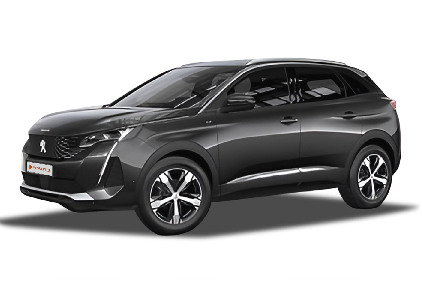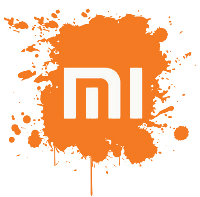Q
what segment is proton s70
The Proton S70 belongs to the C-Segment (Compact Sedan) category. In the Malaysian market, this type of vehicle has gained attention for its affordability, fuel efficiency, and suitability for urban driving. The Proton S70 typically features a comfortable interior design, meeting the needs of daily commuting. Its exterior design also aligns with the aesthetic preferences of local consumers.
Q
How many kilowatt-hours does it take to charge a Porsche Taycan?
The charging capacity of the Porsche Taycan can vary depending on factors such as the model, battery capacity, and charging method. Generally speaking, the typical Porsche Taycan requires about 70 - 90 kWh of electricity to fully charge.
Q
What's the Engine Displacement of Toyota Yaris?
The Toyota Yaris is equipped with a 1.5L naturally aspirated engine (engine displacement: 1496cc), a small yet efficient powertrain that delivers balanced performance and fuel economy, making it ideal for city commuting and daily use. This 1.5L Dual VVT-i engine produces decent torque at low RPMs, paired with a CVT transmission, offering smooth and fuel-efficient driving. The official fuel consumption figures are approximately 5.3 to 5.9L per 100km (varies slightly depending on driving conditions and model specifications).
The 1.5L displacement of the Yaris aligns well with Malaysian consumers' preferences, providing agile urban driving while maintaining low maintenance costs. Additionally, its 1.5L engine size keeps road tax affordable, contributing to lower long-term ownership expenses.
Q
What Is the Size of Proton X50? How Big Is It?
The Proton X50 is a Class B vehicle. It measures 4,330 mm in length, 1,800 mm in width, 1,609 mm in height, and has a wheelbase of 2,600 mm. These dimensions create a comfortable interior space for five passengers. The length allows for a reasonable size of the cabin and trunk, providing ample room for luggage storage during daily use and trips. The width offers sufficient shoulder room for both front and rear passengers, enhancing comfort during long - distance journeys. The height ensures that passengers have enough headroom and can sit upright without feeling cramped. The wheelbase affects the vehicle's driving quality and stability. The 2,600 - mm wheelbase of the Proton X50 contributes to a smooth and stable ride on various road surfaces.
Q
how to turn off proton saga alarm
To turn off the alarm on a Proton Saga, you can usually try the following methods: First, unlock the vehicle using the car key, as this may deactivate the alarm. Next, check if any items inside the car have triggered the alarm sensors and remove them. If the vehicle is equipped with a dedicated alarm deactivation button, locate and press it. However, please note that the method for deactivating the alarm may vary slightly depending on the model year and configuration of the Proton Saga.
Q
what type of car is chery tiggo 7
The Chery Tiggo 7 is a compact SUV. It features a stylish exterior design with smooth, dynamic lines. The interior is well-equipped, offering a comfortable driving experience. In terms of performance, it performs well, meeting the demands of daily city driving and some level of long-distance travel. Overall, the Chery Tiggo 7 is a high-value model that aligns with the needs of the Malaysian market.
Q
how much horsepower does a lexus is300 have
The power parameters of different years and versions of Lexus IS300 vary:
The 2007 model is equipped with a 3.0L V6 engine, producing a maximum power of 228 horsepower and a maximum torque of 300 Nm, paired with a six-speed automatic transmission.
The 2008 model also features a 3.0L V6 engine, with a maximum power of 215 horsepower and a maximum torque of 292 Nm, matched with a six-speed automatic transmission.
The 2011 model has a 2.5L naturally aspirated V6 engine, delivering a maximum power of 208 PS at 6400 rpm and a maximum torque of 252 Nm at 4800 rpm, equipped with a six-speed automatic transmission.
The 2017 model comes with a 2.0T engine, producing a maximum power of 180 kW (245 PS) and a peak torque of 350 Nm, paired with an eight-speed automatic transmission.
The 2020 model is available with a 2.0T four-cylinder turbocharged engine and a 3.5L naturally aspirated V6 engine, delivering maximum powers of 179 kW (244 horsepower) and 194 kW (264 horsepower), respectively, with an eight-speed automatic transmission and a six-speed automatic transmission.
Additionally, some models are equipped with a 2.0L turbocharged engine, designated as 8AR-FTS, which delivers maximum power at 5800 rpm and maximum torque within the range of 1650 to 4400 rpm.
Q
What is the Top Speed of Suzuki Jimny? Let's Learn Its Max Speed
The top speed of the Suzuki Jimny varies depending on the model and powertrain configuration. Currently, the official top speed of the fourth - generation Jimny (equipped with a 1.5L K15B naturally aspirated engine) sold in the Malaysian market is 145 km/h. In actual driving, it may fluctuate slightly due to road conditions and vehicle load. This small off - road vehicle features a body - on - frame construction and a part - time four - wheel drive system. Its design focuses more on off - road performance rather than top - speed performance. The gear ratio of the 4AT transmission is also set to prioritize low - speed torque output.
It's worth noting that the square body shape of the Jimny creates relatively high wind resistance at high speeds. Malaysian owners are advised to maintain a cruising speed of 110 - 120 km/h on highways like the North - South Expressway to ensure fuel efficiency and stability. When attempting high - speed driving, be aware that cross - winds on mountain roads around Kuala Lumpur can affect vehicle handling. Additionally, the original tires of the Jimny are more suitable for gravel roads than for high-speed driving on pure paved roads.
Similar to other off - road vehicles in the same class, such as the Toyota Land Cruiser or Jeep Wrangler, their top - speed performances are also comparable. The charm of these types of vehicles lies more in their off - road traversing ability than in straight - line acceleration performance.











